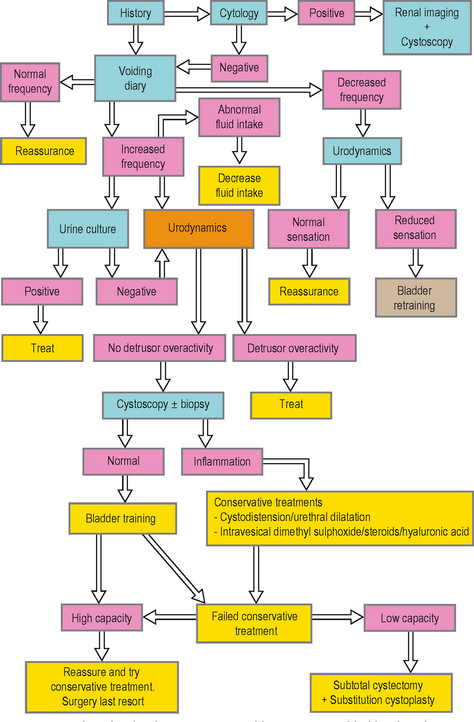CHAPTER 7 Sensory disorders
HYPER-SENSITIVITY
Evaluation of bladder hyper-sensitivity
• Daytime frequency – a prominent symptom for which bladder pain rather than impending incontinence is the trigger.
Investigations of bladder oversensitivity are often complex with the requirement to exclude a number of pathologies. Figure 7.1 shows a possible management pathway for the investigation and management of this complex problem.
• Cystoscopy and overdistension (pressure of 80–100 cm H2O for 5 min) and bladder biopsies of any abnormality as appropriate – this procedure is both investigative and in some cases therapeutic. There is usually a rise in pulse rate and blood pressure in patients with bladder hyper-sensitivity, under a light general anaesthetic; in addition, bleeding and non-specific glomerulations can often be seen in the bladder following the distension.
< div class='tao-gold-member'>
Only gold members can continue reading. Log In or Register to continue
Stay updated, free articles. Join our Telegram channel

Full access? Get Clinical Tree












